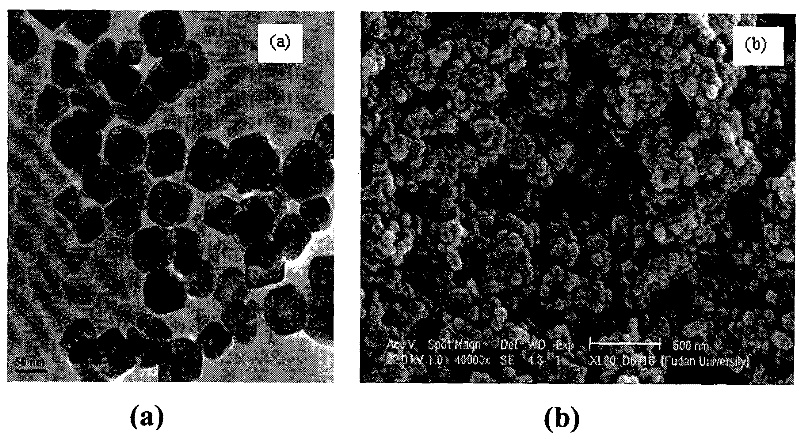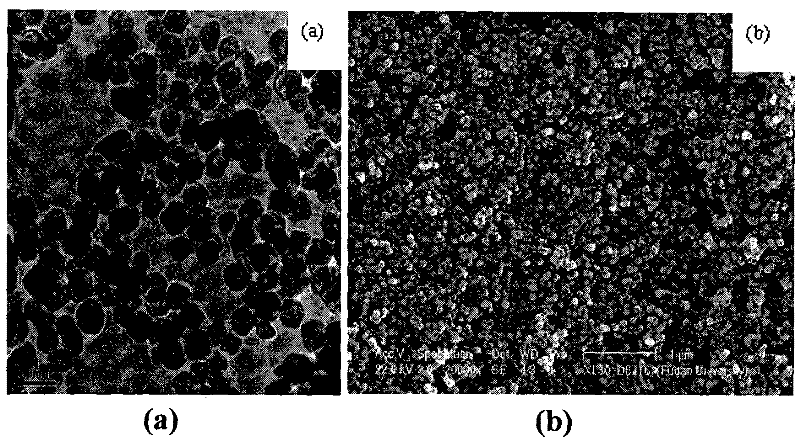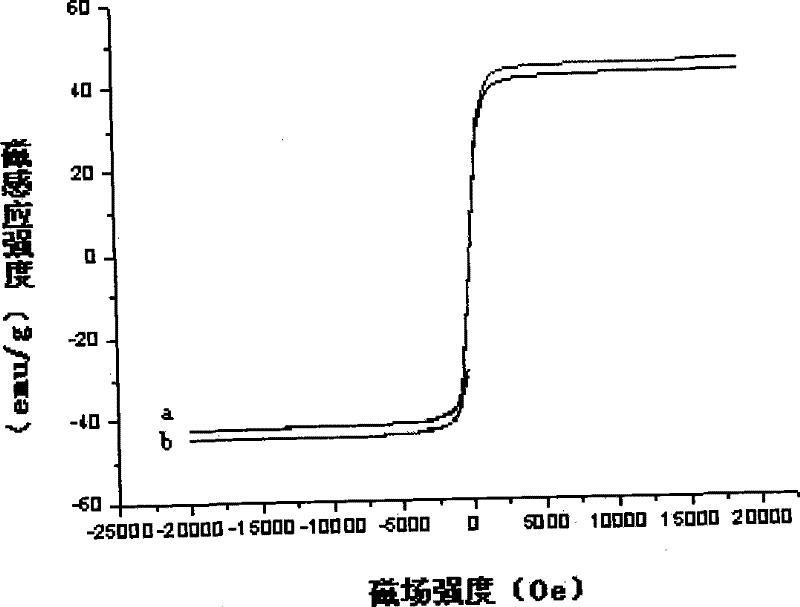Amino magnetic nanoparticles immobilized on the surface of metal copper ions and its preparation method and application
A magnetic nanoparticle, surface immobilization technology, applied in chemical instruments and methods, other chemical processes, etc., can solve the problems of secondary pollution limitation, difficult to remove algal toxins, low efficiency, etc., to avoid secondary pollution, good practical value And the application prospect, the method is simple, practical and effective
- Summary
- Abstract
- Description
- Claims
- Application Information
AI Technical Summary
Problems solved by technology
Method used
Image
Examples
Embodiment 1
[0023] Example 1 Synthesis of Amino Magnetic Nanoparticles with Metal Ions Fixed on the Surface
[0024] The synthesis of the magnetic microsphere material with metal ions immobilized on the surface of aminoferroferric oxide is divided into three steps.
[0025] First, a hydrothermal method was used to synthesize ferroferric oxide magnetic nanomaterials: 1.0 g FeCl 3 ·6H 2 O was dissolved in 30 mL of ethylene glycol, and magnetically stirred for 0.5 h to obtain a yellow transparent solution. Then 4.0 g of anhydrous NaAc was added, and after magnetic stirring for 0.5 h, 3.6 g of 1,6-hexanediamine was added, and after magnetic stirring for 0.5 h, a brownish-yellow transparent solution was obtained. The resulting solution was transferred into a 200 mL Teflon-lined stainless steel reaction kettle. Put it in an oven at 200°C for 12 hours. Vacuum dry at 50°C for later use.
[0026] Secondly, carry out chemical modification on the surface of amino magnetic nanoparticles: dispers...
Embodiment 2
[0028] Example 2 The removal and high-performance liquid chromatography determination of MC-LR and MC-RR in the microcystin mixture
[0029] Add 100μL to a 1mL colorimetric tube with a concentration of 15μgmL -1 Mixture of microcystins MC-LR and MC-RR, add 10 μL to a concentration of 100 mg mL -1 Surface immobilization of Cu 2+ Amino ferroferroferric oxide magnetic nanomaterials were dispersed, diluted to 1 mL with deionized water, and shaken at room temperature for 5 min. Under the action of a magnetic field, the supernatant solution is separated from the precipitate; the supernatant is used for high performance liquid chromatography analysis. High performance liquid chromatography adopts Shimadzu LC-20AD system (Shimadzu Corp., Japan), autosampler and SPD-20AUV-vis detector, detection wavelength is 238nm, analytical column is a reversed-phase chromatographic column (150 × 2.1mm, 5μm , 300 C18, SinoChrom, Dalian Elite Company, China), the mobile phase A uses 0.05% TFA, t...
Embodiment 3-4
[0031] Adjust the final concentrations of MC-RR and MC-LR to 0.05, 0.5, 1.0, 2.0, 3.0, 4.0, 5.0 μg mL, respectively -1 , 20 μL sample injection, repeated 3 times, other conditions were the same as in Example 2, and the standard curve was drawn with the peak area of the chromatographic peak versus the toxin content. Using the standard addition method, other conditions were the same as in Example 2, and the maximum loads of MC-RR and MC-LR were 60 μg and 20 μg, respectively.
PUM
| Property | Measurement | Unit |
|---|---|---|
| particle diameter | aaaaa | aaaaa |
Abstract
Description
Claims
Application Information
 Login to View More
Login to View More - R&D
- Intellectual Property
- Life Sciences
- Materials
- Tech Scout
- Unparalleled Data Quality
- Higher Quality Content
- 60% Fewer Hallucinations
Browse by: Latest US Patents, China's latest patents, Technical Efficacy Thesaurus, Application Domain, Technology Topic, Popular Technical Reports.
© 2025 PatSnap. All rights reserved.Legal|Privacy policy|Modern Slavery Act Transparency Statement|Sitemap|About US| Contact US: help@patsnap.com



